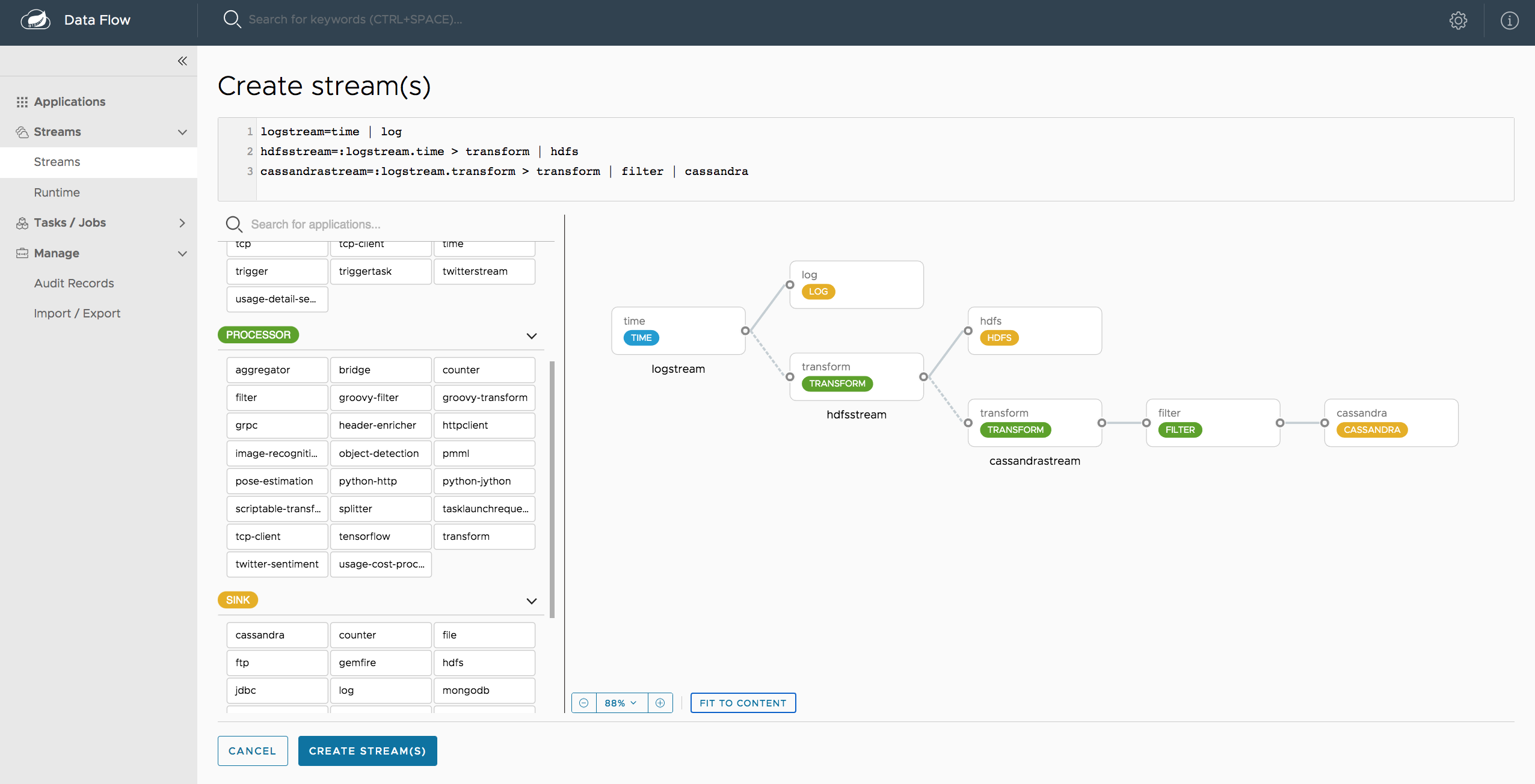Spring Tips: The Kotlin Programming language
Speaker: Josh Long
Hi Spring fans! In this tip, we'll quickly look at the Kotlin programming language and some very high-level things you need to know when building Spring Boot and Kotlin applications
Speaker: Josh Long
Hi Spring fans! In this tip, we'll quickly look at the Kotlin programming language and some very high-level things you need to know when building Spring Boot and Kotlin applications
Welcome to another installment of This Week in Spring! It's been another crazy wonderful week. This week I'm in London and Cambridge, UK visiting with customers and speaking (in particular, at the O'Reilly Software Architecture Conference) If you're about be sure to say hi! Now then, let's get to it!
On behalf of the team, I am pleased to announce the release of the second milestone of Spring Cloud Data Flow 1.1. You can download the local server that is part of this release here.
The 1.1 M2 release includes the following new features and improvements:
Builds upon Boot 1.4.1 and Spring Cloud Camden improvements
Task application properties can now be referenced using non-prefixed property names
Add visual representation for related streams. This representation also includes nested TAPs and the downstream processing nodes in an overall topology view.

The UI adds bulk import support for Task definitions. This allows importing task definitions from a file or the ability to add multiple task-definitions using the Flo-editor
The flo-editor embeds CodeMirror for incremental DSL syntax validation and error reporting. There’s also a toggle on/off button to enable and disable incremental validations.
Adds a form-based login page for non-OAUTH backend authentication methods such as the LDAP, Basic and File-based options.
Adds the ability to pass application specific properties via YAML file. This is particularly useful when deploying streams with that set many deployment properties.
…Speaker: Josh Long
Hi Spring fans! In this tip, we'll look at enterprise application integration with Spring Integration and the Spring Integration Java Config DSL.
I apologize to both the Spring and Apache Geode communities for the delay, relative to the Apache Geode M3 release announcement, but I am very excited and pleased to follow that with the release of Spring Data for Apache Geode 1.0.0-incubating.M3.
You can get the bits from Maven Central by including the following dependency in either your application Maven or Gradle build files ...
<dependency>
<groupId>org.springframework.data</groupId>
<artifactId>spring-data-geode</artifactId>
<version>1.0.0.APACHE-GEODE-INCUBATING-M3</version>
</dependency>
compile 'org…Welcome to another installment of This Week in Spring! It's already almost mid October and I can't believe we're almost in 2017! Time is sure flying quickly!
Welcome to another installment of This Week in Spring! We've got a lot to look at so let's get to it!
Wow! It's already almost October! This year has sure gone by quickly!
Welcome to another installment of This Week in Spring! This week I'm in the studio with Phil Webb recording the next installment of our Livelessons series on building Microservices with Spring Boot. It's been a lot of fun so far and we've only just begun!
Tonight, I hope you'll join me for Cloud Native Java on the vJUG's worldwide and live event going on in timezones all around the world!
We've got so much to cover, so let's get to it!
As mentioned yesterday in Juergen's blog post, the second milestone of Spring Framework 5.0 introduced a new functional web framework. In this post, I will give more information about the framework.
Keep in mind the functional web framework is built on the same reactive foundation that we provided in M1 and on which we also support annotation-based (i.e. @Controller, @RequestMapping) request handling, see the M1 blog post for more on that.
We start with some excerpts from our sample application. Below is a reactive repository that exposes Person objects. It is quite similar to a traditional, non-reactive repository, except that it returns Flux<Person> where you would return a List<Person> traditionally, and Mono<Person> where you would return a Person. Mono<Void> is used as a completion signal: to indicate when the save has been completed. For more information on these Reactor types, refer to Dave's blog post…
Hello world! Since we last talked, I've been in multiple cities in China, including Hangzhou, Shanghai, Beijing, Guangzhou, Shenzhen and Hong Kong, talking to customers and community members alike. It's fascinating to see what our amazing customers in China do with our technologies in the hypercompetitive Chinese market. And, tasty!
spring.integration.readOnly.headers…